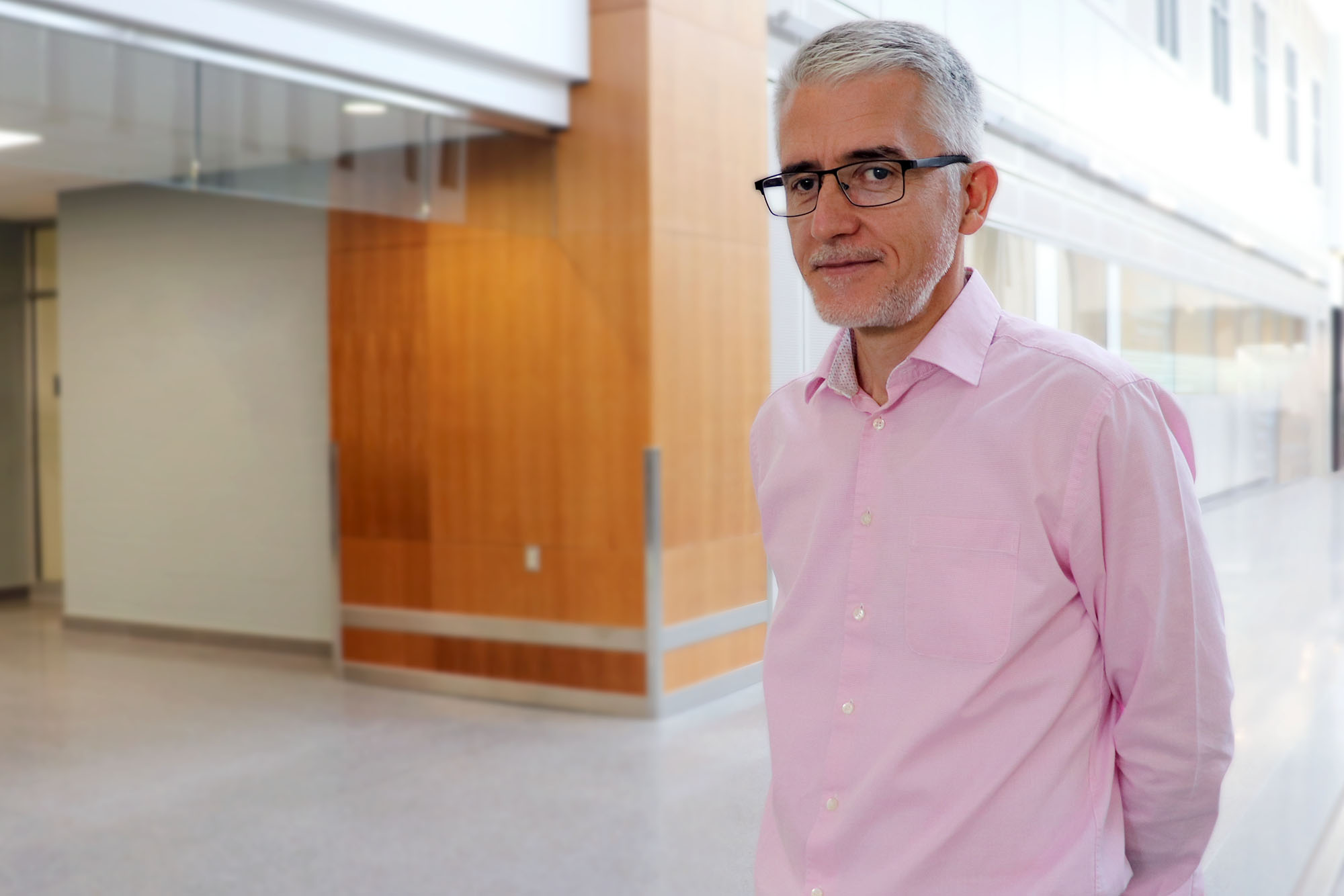
Healthcare Simulation Week: Meet a simulation educator
Dr. Salih Nela (MD, MEd) helps develop and refine simulation-based education sessions at USask’s Clinical Learning Resource Centre (CLRC).
Healthcare Simulation Week 2023 takes place between Sept. 18 and 22. To help recognize the importance of healthcare simulation and the work being done in that area at the University of Saskatchewan’s Clinical Learning Resource Centre (USask CLRC), we’re showcasing some of the people who help provide health science students and community partners with an innovative, educationally rich environment through simulation education, technology, research, and evaluation.
In this Q&A, we asked Dr. Salih Nela (MD, MEd) about his experience at the CLRC as a simulation educator.
How would you describe your role as a simulation educator at the CLRC?
- I collaborate with the CLRC’s educational partners to develop educational sessions that align with best practices for simulation-based education. It’s my job to help ensure that the simulated modalities (e.g., manikins, patients, or a hybrid of both) meet the objectives of each learning session. I also support scenario development for course curricula with sound simulation pedagogy principles and adult learning theories, and I assist with the operation and programing of the simulators for training sessions. In some sessions, I provide debriefing and feedback to the learners. Another aspect of my job involves the training of the real-world healthcare professionals supporting the various simulated learning sessions in the CLRC.
What happens in the simulation labs at the University of Saskatchewan Clinical Learning Resource Centre (CLRC)?
- Typically, when students come in, they will meet their facilitator, simulation operator, and the trained support nurse who will be connected through an earpiece to the faculty member running the simulation once it begins. Following an orientation of the simulation environment and some basic rules, the learners will get oriented to the simulation room and the scenario. Usually, a simulation session lasts 15-20 minutes and is followed by a 30-minute debriefing for learners to reflect on their performance and bridge gaps in their knowledge base without being judged for any mistakes.
How does simulation contribute to quality skill development of healthcare providers?
- Simulation plays a key role in developing clinical skills in a safe environment without risking patient safety. Repetition of the skill with adequate feedback allows for a high degree of training and increases the confidence of the learners. Use of advanced simulators like our BRONCH mentor, laparoscopy trainer, as well as task trainers such as trauma man, paracentesis and thoracentesis trainers, and many others helps learners understand, practice, and maintain the skills acquired. Because the simulation feels real, this leads students to engage during the simulation and try to solve a “clinical puzzle” in a safe environment. Scenarios used in simulation can be standardized, controlled, safe, predictable, and reproduced which increases the consistency of education.
How are simulation scenarios developed?
- Scenarios are developed based on the learning objectives identified by the program faculty. Designing an effective scenario requires significant planning, — including knowledge of the target learners, goals, objectives, and intended outcomes. When you design a scenario, it must include consideration of the level of fidelity (believability), use of props, moulage (realistic makeup), embedded participants (non-learners ‘planted’ in the scenario), simulators, and any required simulated patient actors.
What programs use the simulation center at USask? Do they ever collaborate on simulation? Do you ever partner with community groups outside of the university environment?
- The Clinical Learning Resource Centre supports undergraduate medical students (years 1 to clerkship) and residents of different specialties including: anesthesia, emergency medicine, internal medicine, family medicine, surgery, pediatrics, obstetrics-gynecology and nursing. There has been collaboration in simulation between anesthesia and orthopedic surgery for a communication scenario. We have also worked with emergency medicine to conduct an emergency disaster mass casualty simulation in partnership with multiple allied healthcare organizations including the Saskatchewan Health Authority, STARS Ambulance, Saskatchewan Polytechnic, Medavie Health Services, Saskatchewan Air Ambulance, and the Dilawri Simulation Centre in Regina.
What is the future for simulation education?
- Simulation education has a bright future. Medical curricula are heavily reliant upon simulation for practicing different clinical scenarios, learning how to function in a multidisciplinary team environment, and training future physicians to lead teams and communicate effectively in critical situations. The Society for Simulation in Healthcare also works tirelessly to offer certification courses that help simulationists around the world develop and maintain the highest standard of simulation teaching skills.
What is the best part of your job at the CLRC?
- My passion for education is fulfilled with this position. Helping learners achieve their objectives through simulation and seeing their reactions when we build different task trainers to enhance the realism is priceless.
To learn more about the Clinical Learning Resource Centre at the University of Saskatchewan, visit https://healthsciences.usask.ca/CLRC.
The Clinical Learning Resource Centre (CLRC) was launched in 2006 as an interprofessional education and training centre dedicated to providing University of Saskatchewan (USask) health science students and community partners with an innovative, educationally rich environment through simulation education, technology, research, and evaluation.
The CLRC aims to improve patient safety, quality of patient care, and the work of professionals seeking to further enhance their knowledge, skills, attitudes, and practices.
The CLRC is uniquely positioned to work with clients to customize an extensive range of training and testing simulation scenarios thanks to 24 dedicated clinical simulation rooms, four expansive procedure lab areas, three simulation suites, and a variety of specialized simulation equipment and technology.
With an average of over 70,000 learner contact hours supported each year, the CLRC has evolved into a super-sized simulation centre dedicated to providing healthcare students the opportunity to learn and practice clinical and communication skills in a safe, simulated environment.
In addition to helping students safely apply theoretical knowledge through real-world scenarios, the CLRC helps make client goals and student aspirations a reality by providing debriefing opportunities and examination resources designed to develop and/or assess clinical skill performance and other essential competencies.

